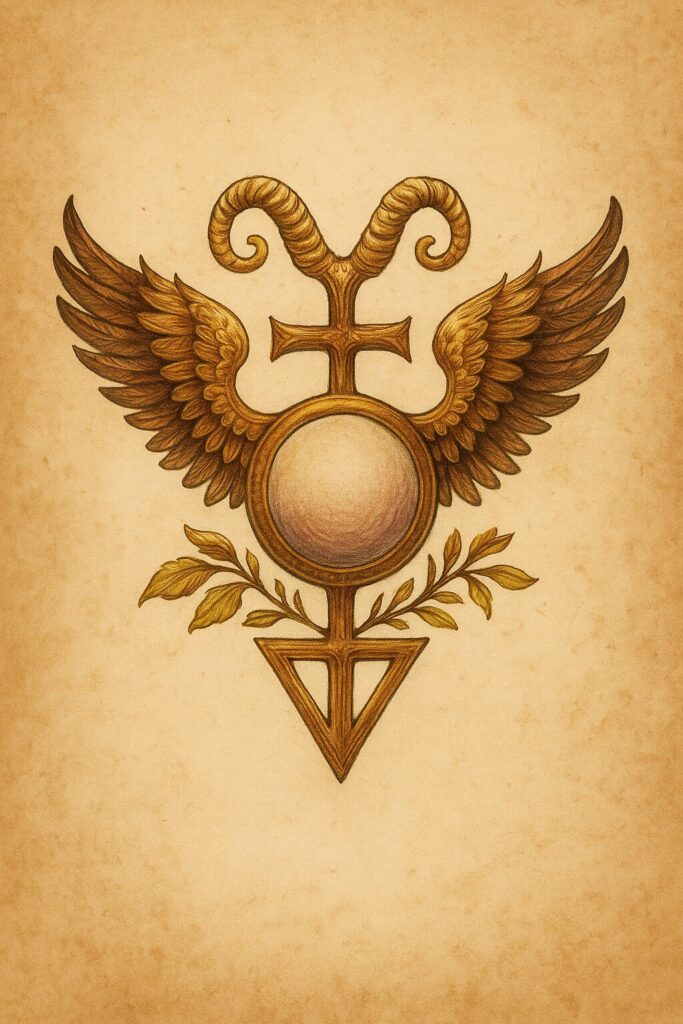The Shadow in the Story
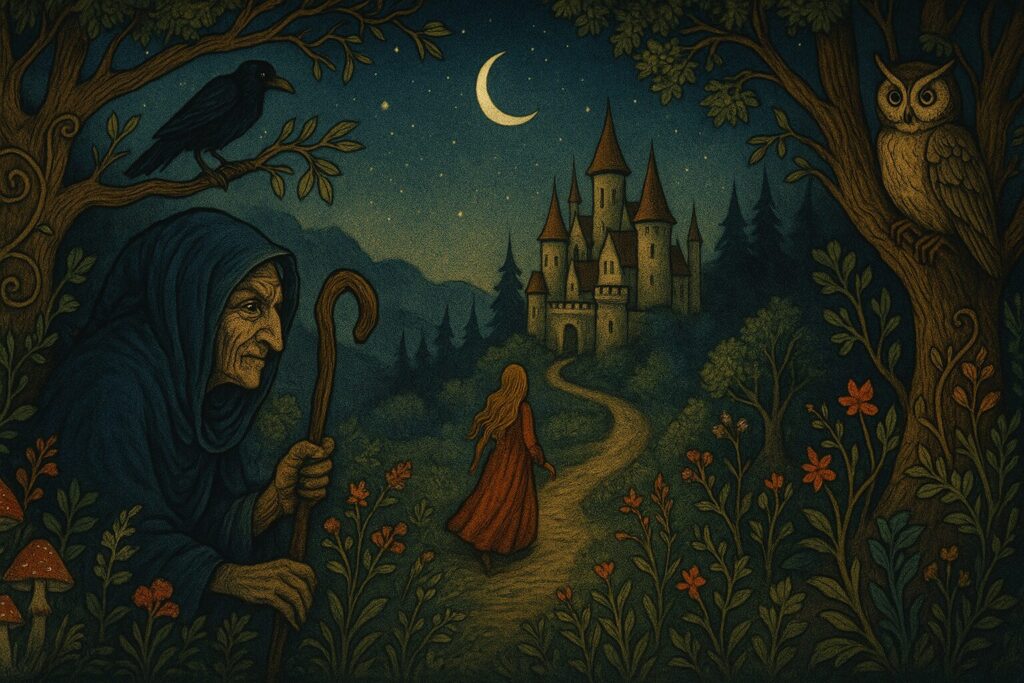
Stories were born long before alphabets, penned in the darkness between winter nights and the breath of a fire. They were not meant for children. They were meant for survival. They taught which rivers turned treacherous in the thaw, which plants eased childbirth, which storms carried hunger, which spirits needed placating, which paths led home and which led into permanent shadow. To sit at the fire and listen was to inherit the memory of your people. And somewhere in almost every tale that survived those early centuries stands the figure who walks between worlds, unsettling and indispensable in equal measure: the witch.
But the witch we think we know — the bent crone, the cackling villain, the sugary lure of Hansel and Gretel’s gingerbread house — is only the most recent mask. Behind her flickers a lineage older than the languages we use to describe her. The earliest tales carried her as a wind-witch, a winter goddess, a bone-wearing sky rider, or a grandmother of storms. Over time she was diminished, smoothed, sharpened, transformed into jokes and terrors and nursery threats. Yet even in those distortions, fragments of older truths remain — for fairy tales, like bones buried in soft soil, keep their shape long after the flesh has changed.

If you were to listen to the oldest European stories — the ones told before the church bells, before printed books, before Grimm and Disney and the centuries of moralizing caution — you would hear the night filled with hooves. A storm sweeping over the mountains was not just weather; it was the Wild Hunt, a procession of spirits and ancestors riding across the sky. Sometimes the hunt was led by Odin or Gwyn ap Nudd, but often, strikingly, by a woman: Holda, Perchta, Frau Gaude, Nicnevin, the Cailleach in the north. These Night-Mothers governed winter and fate, inspected households, protected infants, and called storms to their heels. They were not witches, not yet. They were sovereign beings tied to the turning of the year.
Witches, Queens & Crone Figures in Lore
How older goddesses, liminal spirits, and wise women were rewritten into fairy-tale hags, villains, and cartoons – and what still shines through.
| Tale / Figure | Culture | Older Layer / Original Meaning | Later Distortion | Kernel That Survives |
|---|---|---|---|---|
| Baba Yaga | Slavic | An ambiguous winter crone, forest mother, and guardian of thresholds; likely carrying echoes of an ancestor or land goddess. | Turned into a bone-legged horror in children’s versions, used as a threat to frighten the disobedient. | Her role as tester, keeper of forest wisdom, and sovereign of life/death challenges remains unmistakable. |
| Hansel & Gretel Witch | Germanic | A memory of famine and winter hunger, mapped onto a solitary woman at the forest edge who becomes a scapegoat for scarcity. | Recast as a cannibalistic monster, flattening social trauma into a simple “evil witch” narrative. | The forest trial, the terror of hunger, and the vulnerability of abandoned children still pulse beneath the candy façade. |
| Perchta / Holle | Germanic / Alpine | Winter goddess and household judge who oversees spinning, hospitality, and the care of the dead during the dark half of the year. | Reduced to a frightening crone who slits bellies or punishes children at Yule in later folk warnings. | Her inspection of work, association with winter nights, and link to souls and snow remain at the heart of the tales. |
| The Cailleach | Celtic (Scotland & Ireland) | Ancient land-shaping goddess of winter and storms, who forms mountains and governs the dying of the year. | Simplified into a terrifying old hag of winter, used to personify harsh weather and “old age” as a threat. | The image of a powerful female figure commanding landscape and season still stands in folk memory. |
| Leprechaun | Celtic (Irish) | Probably linked to artisan or treasure guardians, spirits of craft, luck, and underground wealth. | Diminished to a caricatured green-clad cartoon trickster, merchandising charm rather than myth. | Cleverness, hidden treasure, and the sense that wealth is guarded by liminal spirits survive in modern images. |
| Witch of Endor | Near Eastern (Biblical) | A medium whose work resembles ancestral consultation and controlled spirit communication for kings and communities. | Later framed theologically as transgressive, folded into narratives of forbidden magic. | Her function as a bridge between worlds persists in every retelling of the story. |
| Selkies | Celtic (Orkney & Irish) | Shapeshifting sea beings linked to sovereignty, emotion, and the pull between land and water, human and otherworld. | Rewritten as cautionary tales where stolen skins justify control over women’s bodies and desires. | Themes of transformation, homesickness, and the right to one’s own skin remain emotionally vivid. |
| Circe | Greek / Mediterranean | Goddess-sorceress of herbs, transformation, and sacred boundaries, commanding a liminal island between worlds. | Retold as a seductive temptress or villainous witch in later patriarchal readings. | Her sovereignty, plant magic, and transformative power continue to attract new interpretations and retellings. |
| Frau Trude & Other Crone Tales | Germanic | Guardian and truth-teller at the forest edge, exposing deceit and cowardice in those who visit her. | Turned into outright horror, used to terrify children into obedience and compliance. | The idea of a liminal elder who sees through lies and tests character remains central. |
| Fairy Godmother | Pan-European (Modern) | A softened remnant of the wise-woman, hearth witch, or protective household spirit who blesses and advises. | Sanded down into a cheerful, non-threatening helper stripped of ambivalence, edge, and real power. | The intuition that there are unseen allies who can bless at crucial thresholds is still alive. |
| Snow White’s Queen | European (Grimm) | Echo of an older beauty-and-winter figure, possibly tied to seasonal queens and aging goddesses. | Reduced to a vain, jealous stepmother who will kill to preserve youth and status. | The mirror, the contest between youth and age, and the dangerous power of the queen archetype remain potent. |
| Sleeping Beauty’s Spurned Fairy | French / European | Originally closer to a wise woman or fate-being overlooked in ritual invitation. | Flattened into a petty, vengeful “evil fairy” or witch who curses an innocent child. | The lesson about slighting powers at the edge of the community, and the weight of ritual hospitality, survives beneath the gloss. |
| Rapunzel’s Witch (Mother Gothel) | Germanic | A herb-witch or wise woman who bargains for a child and raises her in isolation, with roots in older child-offering and guardian motifs. | Transformed into a purely controlling kidnapper whose motives are vanity and possessiveness. | The tower, the hair as power, and the tension between protection and imprisonment still reveal old anxieties about girlhood and autonomy. |
| Sea Witch (Little Mermaid) | Scandinavian / Danish | Oceanic witch figure drawing on older sea goddesses and perilous water spirits who negotiate high-stakes bargains. | Condensed into a villain who preys on the naïve, later amplified into pop-culture monsters. | The notion that deep magic requires cost, and that the sea has its own sovereign powers, remains intact. |
| The Snow Queen | Scandinavian | Personification of winter’s beauty and lethal clarity, with possible echoes of older frost goddesses. | Portrayed as an emotionally cold kidnapper, a test for innocent children to overcome. | The allure and danger of winter, and the idea that ice can reflect truth as well as numbness, persists. |
| Wicked Witch of the West | Modern (American, from European lore) | Composite of European witch fears and frontier anxieties, standing in for uncontrolled female and elemental power. | Made into an iconic green-skinned villain in film, easy to hate and easy to merchandise. | Later retellings reveal her as misunderstood or resisting oppressive systems, showing how the witch can be re-read. |
But memories twist in the telling, especially when new powers rise. As Christianity spread, these winter queens were too powerful to erase, so they were reduced instead. They became haunting hags, or dangerous old women who punished children or wandered the cold roads. Shorn of their divinity, they remained in the culture only as echoes — crooked outlines, recolored by fear. When the witch of folklore appears hunched in a forest cottage, stirring a pot, muttering at the hearth, she carries the faintest shadow of those seasonal rulers whose judgments once guided whole villages.
Fairy tales inherited these figures but repurposed them. A society constantly threatened by hunger, plague, and winter needed tidy moral categories: good children rewarded, bad children punished, obedience rewarded, curiosity punished. The complex winter goddess who balanced life and death was folded into the role of the wicked stepmother. The ancestral spirit who judged the quality of spinning and household order became a frightening old woman in a cottage who might seize you if you misbehaved. The wise woman at the edge of the village — midwife, herbalist, counselor, and healer — was recast as a cannibal in Hansel and Gretel, though the bones of that tale speak of famine more than sorcery. Fairy tales aren’t innocent. They are shaped by starvation, by social need, by political pressure, by attempts to manage fear.
Over time the witch became an all-purpose container for cultural anxieties. Women who lived alone; midwives who knew how to manage birth and quiet pain; elders who preserved rituals from before the church; neurodivergent people whose differences were read as signs of otherworldliness; trunkless wanderers, beggars, or hermits; men who practiced seiðr and thus transgressed gender roles — all were vulnerable to the stories that had been sharpened into weapons. A good story can protect you, but a distorted story can destroy you just as easily.
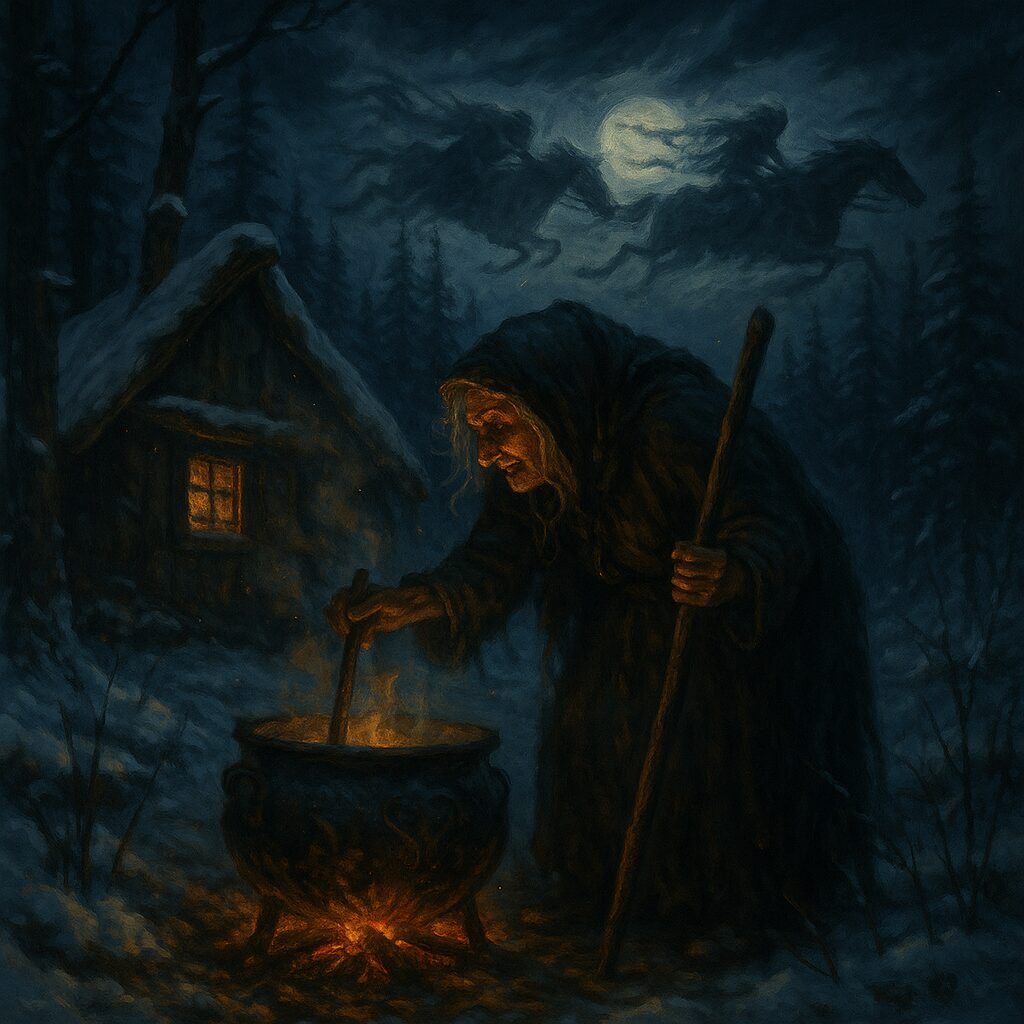
And yet fairy tales never fully succeed in their distortions. They are porous things. Even in their most moralized forms, they leak fragments of what came before. The forest in these stories feels alive because it once was the territory of spirits and the dead. The three tasks the hero must complete echo old initiation rites. The animal that appears to guide the lost child is the faded memory of a totemic companion. The stepmother who seeks to kill the maiden is what remains after a goddess of seasonal death was split into parts, her nurturing face hidden and her wintry face exaggerated. Even the gingerbread cottage remembers something: the desperation of winters so lean that hunger warped into myth.
Folklore scholars talk about “kernels” — small, indestructible fragments buried within each tale. The outer layer might bend, moralize, or ridicule, but the kernel persists. In that kernel, the witch is not a joke or a villain. She is the threshold. She is the storm’s herald. She is the one who knows the border between life and death, who holds the memory of famine and the knowledge of herbs, who walks where the village ends and the forest begins.
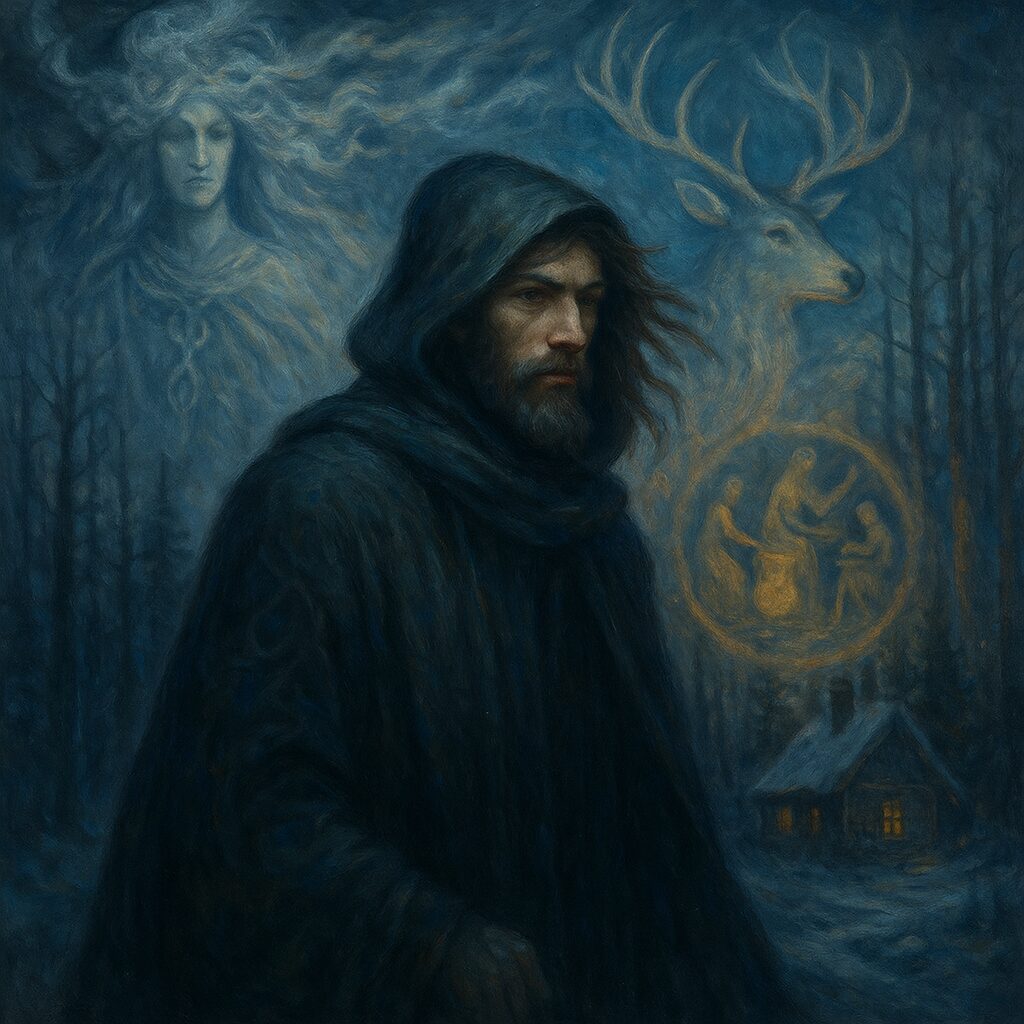
Modern pop culture believes it invented the witch anew, but it inherited the entire apparatus. Disney’s hags and dark sorceresses are direct descendants of the winter crones and forest mothers. Hermione Granger, for all her sweetness, walks in the shadow of the wise woman once treasured in village lore. Wanda Maximoff, in her chaos and grief, channels the remnants of chaos goddesses long since written out of respectable mythology. Even the most ridiculous portrayals retain the gravitational pull of the older archetype: independence, liminality, knowledge, and danger woven into a single figure.
Urban legends repeat the pattern. Bloody Mary, summoned in a mirror, echoes mirror scrying and ancestor invocation. The White Lady wandering the roadside is a grief-ghost with roots older than any highway. The black dogs seen at crossroads recall the Barghest and other threshold guardians. Slenderman, though a digital invention, behaves like an old forest haunt, shaped by communal fear. These are not “witch stories” in the narrow sense, but they play the same cultural role — marking the places where the ordinary world thins and another rises beneath it.

In every age, the witch survives because the questions she embodies do not disappear. What do we fear? Who do we trust? Where does power come from? What happens when someone stands outside the roles offered to them? Whose knowledge is forbidden, and why?
So many ancient beings — goddesses, spirits, artisans of the sun, guardians of the dead — were diminished into creatures small enough for children’s tales. Leprechauns once belonging to the shining craft-gods were reduced to green-clad tricksters and cereal mascots. Elves, once shimmering and terrifying, became tiny toymakers in felt shoes. The ancestral Night-Mothers became the witch in the woods. This is the great shrinking of the mythic world, and fairy tales played their part.
But even diminished, they never fully died. These stories hum under the surface. They resist erasure. And the witch — bent, borrowed, disguised — remains as a guide back into the deeper forest.
To reclaim her is not to pretend she was always benevolent. It is to remember she was never merely what the stories later made her. She was a keeper of thresholds. A reminder of wilderness. A bearer of old memory. A force shaped by hunger, season, winter, and the knowledge that power often lives on the margins where no king, no priest, and no moralizing tale can fully reach.
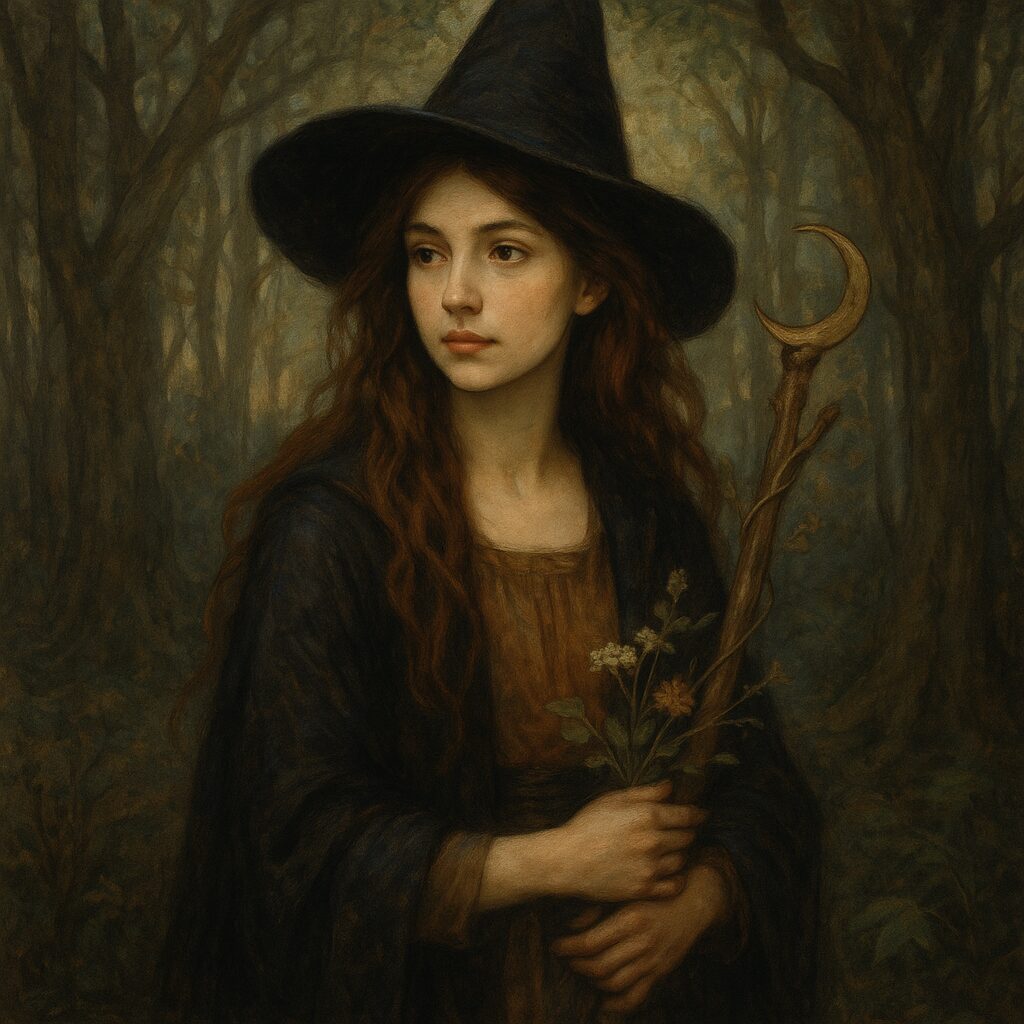
The witch in fairy tales is a distortion, yes — but a revealing one. Through her, you can see where the old goddesses were pushed aside, where famine was transformed into narrative, where women’s autonomy was recast as danger, where liminal folk were exiled into symbol and warning. And yet through her, you can also glimpse what endured: courage, resourcefulness, wildness, ancestral echoes, and resistance. She is a reminder that stories remember even when they try to forget.
The witch was never meant to be the monster at the edge of the tale. She was the one who understood the tale’s beginning — and the one who knew exactly what waited at the end.
Not a warning, but a threshold.
Not a villain, but a keeper of memory.
Not a lesson for children, but a mirror for those willing to look directly into the dark and see what lies beneath.
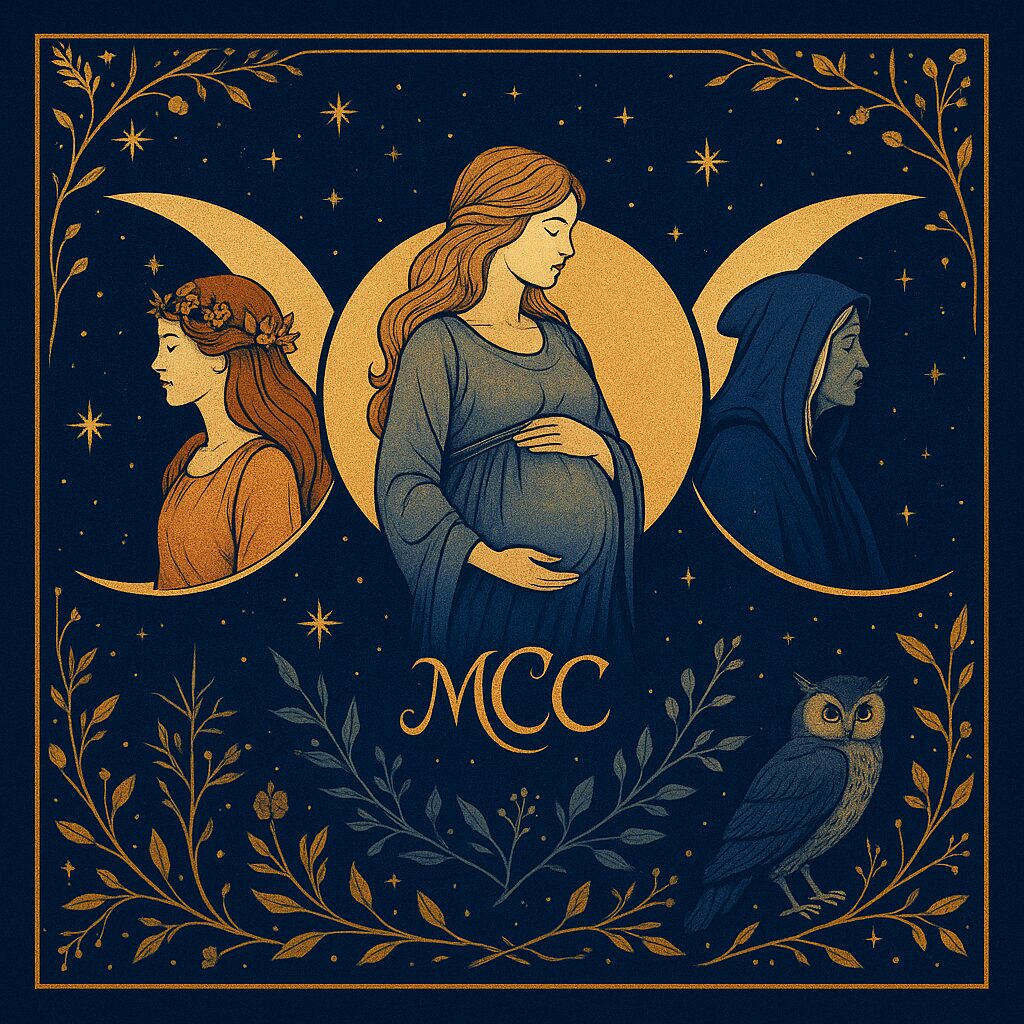
Baba Yaga enters the tale not simply as a villain, but as a figure older than the story that contains her. She sits in a hut that spins on chicken legs, a strange architectural reminder that her home is a moving threshold, neither bound to the human world nor fully withdrawn from it. In the oldest Slavic countryside, winter had a personality, hunger had a voice, and the forest was a sovereign kingdom of its own. Baba Yaga seems to belong to all three realms at once.
In her earliest layers she resembles a winter mother or ancestor-goddess whose tests were rites of passage. Children do not merely encounter her; they are weighed and measured, asked to show cunning, courage, truth, and skill. In later fairy tales she becomes a bone-legged terror, flattened into a monster meant to frighten disobedient children. But even there, she never loses her authority. She is a judge of character, not a mere eater of the careless.
When modern readers meet her crooked silhouette, what they respond to is not simple fear but the gravity of an older power — one that refuses to be domesticated into tidy good or evil. She is the reminder that initiation often comes disguised as danger.
The witch in *Hansel and Gretel* is one of the most misunderstood figures in all fairy lore. Modern readers remember gingerbread and ovens, but beneath the sweet veneer lies a memory of famine so deep it had to be transformed into myth. The story was shaped in winters when children starved, when entire villages worried that their food would not last, and when the solitary old woman living on the outskirts of society was the most obvious — and most tragic — scapegoat.
The gingerbread house, often treated as whimsy, can be read instead as an inversion of scarcity: an impossible abundance in the woods when the world outside was barren. The witch becomes the embodiment of winter’s cruelty, not because she represented malice, but because the tale needed somewhere to place communal fear.
Yet children triumph not through purity but through cleverness and survival instinct. The forest, dangerous as it is, becomes the proving ground. Long after the tale was moralized, its core remains: that hunger shapes stories, and stories shape how hunger is remembered.
Frau Holle and Perchta were once winter queens — guardians of household order, protectors of the dead, and rulers of the darkest nights of the year. Their stories stretch back to a time when spinning was sacred and the hearth was a temple. Villagers believed these figures checked to see whether the work had been done before the turning of the year, rewarding diligence and punishing sloth.
Later retellings sharpened these goddesses into frightening crones. Their judgments became grotesque, their roles distorted into warnings for children. Yet their underlying tasks — blessing, inspecting, maintaining the rhythms of winter — remain visible beneath the later fear-driven propaganda.
Their stories reveal how a divine feminine authority was reduced but never erased. Even now, they linger as whispering presences in winter folklore, guardians watching the border between seasons.
The Cailleach is not simply a character; she is a landscape given consciousness. In Scottish and Irish lore, she builds mountains with her staff, releases freezing storms, and governs the withering of the year. Her presence is so ancient that she feels primordial — the embodiment of winter’s necessary, unflinching power.
Over centuries she was simplified into the old hag of winter, a frightening figure blamed for hardship rather than honored as the sculptor of the season. But the bones of her story are indestructible. Her connection to landforms, weather, and the sovereignty of winter persists even in the softest retellings.
She stands as a reminder that the feminine divine was once understood as both life-giver and life-taker, and that winter is not cruelty but a turning in the great wheel.
Few figures illustrate cultural diminishment as starkly as the leprechaun. In older Irish lore, he was linked to artisan gods, guardians of hidden craft, and keepers of underground wealth. His domain was not luck but skill, not mischief but mastery.
Modern portrayals shrink him into a green mascotted trickster — a caricature that obscures profound mythic ancestry. Yet the kernel persists: treasure buried beneath the earth, craft hidden from the unworthy, and the sense that encounters with liminal beings can enrich or destroy depending on respect.
The Witch of Endor is one of the earliest written accounts of a practitioner who mediates between worlds. She is summoned by a king who has outlawed her craft but desperately requires it. Her portrayal is matter-of-fact, almost respectful, in its earliest form.
Later religious authorities reframed her as a cautionary figure, her work forbidden rather than valued. This reinterpretation reveals more about shifting politics than about her actual role, which was that of a conduit between the living and the ancestral dead.
Her story persists because it captures a universal truth: that power banned by those in authority does not disappear, it simply moves to the margins — and continues its work.
Selkies belong to the cold shorelines of Ireland and Orkney — shapeshifting sea-beings who shed their sealskins to walk the land. Their tales shimmer with themes of longing, freedom, and the impossibility of belonging to only one world.
In later retellings, these stories became cautionary tales about marriage and control, where the selkie woman’s skin is stolen, her autonomy halted, and her desire subordinated to human needs.
Yet the older meaning survives in the ache of every retelling: the right to one’s own skin, the pull of the original home, and the knowledge that captivity, however tenderly disguised, is still captivity.
Circe sits at the far edge of the world in Greek imagination, a sorceress whose magic is inseparable from the herbs she tends and the boundaries she guards. She transforms men not out of malice, but because transformation itself is the language of her island — a place where the inner nature of a visitor becomes visible.
Later authors recast her as a seductress, a danger, a witch who must be outwitted. But her sovereignty endures. Her power is the power of clarity, of revealing what one truly is when stripped of armor and pretense.
She remains a reminder that witchcraft is, at its heart, the art of naming truth — even truths one would prefer to keep hidden.
Frau Trude is one of the grim figures preserved in German folklore — an old woman who sees through disguises and into the core of anyone who approaches her cottage. She is not gentle, and she is not safe. But she is honest in a way the world rarely allows women to be.
In later tellings she becomes a figure of terror, meant to frighten the disobedient. Yet the earlier backbone remains: a watcher at the threshold, weighing courage and cowardice.
The Fairy Godmother appears as a glittering benevolent figure in modern tales, but her lineage reaches back to hearth witches, local wise-women, and household spirits who guarded children and oversaw rites of passage. She was once a being who blessed and warned in equal measure.
Over time she was stripped of her danger and her depth, turned into a cheerful dispenser of wishes. But even in this softened form, she retains the ancient role of one who arrives at a threshold moment to offer guidance.
Snow White’s Queen, with her mirror and her cold grace, is a fractured reflection of winter goddesses whose beauty was not vanity but seasonal power. In the oldest mindset, winter is not jealous but exacting, its beauty stark and merciless.
Later stories shrank this figure into a vain stepmother obsessed with youth. But the mirror — a divinatory tool — briefly reveals her older nature: a queen whose authority is bound to truth, even when truth hurts.
Mother Gothel begins as a herb-witch whose garden grows powerfully enough to bargain for a child. Her story sits at the crossroads of fertility lore, child-offering myths, and the tension between protection and imprisonment.
In modern versions she becomes a caricature of control and vanity. But the tower remains a potent symbol — a liminal space where maidenhood, danger, and initiation converge. And the hair, impossibly long, carries echoes of older beliefs about vitality and magical potency.
The Sea Witch of *The Little Mermaid* stands in a long line of oceanic sorceresses and water spirits who do not deal in morality but in exchange. Her domain is the deep, where desire becomes dangerous and magic always has a cost.
Later retellings cast her as a villain, yet she remains the only character who speaks plainly about power and consequence. She offers the truth that all profound transformations require sacrifice.
The Snow Queen is winter personified — not malevolent, but severe. She reflects rather than destroys, offering a clarity that can feel like cruelty. In her, older frost goddesses flicker beneath the lacework of Andersen’s tale.
Children’s versions soften or demonize her, but she remains the embodiment of cold truth: that beauty can be unforgiving, that stillness can be transformative, and that winter reveals what summer conceals.
The Wicked Witch of the West is a modern creation, stitched together from European fears and American frontier anxiety. She is less a person than a symbol of ungoverned female power, weather-tied magic, and untamed land.
Film flattened her into a green-skinned villain, but later retellings have reclaimed her complexity. She becomes misunderstood, or revolutionary, or a victim of political machinations — proving that the witch archetype can overturn its distortions when examined closely.
